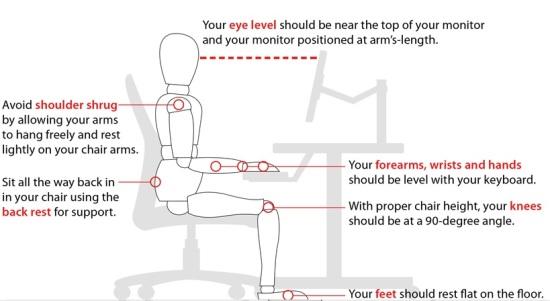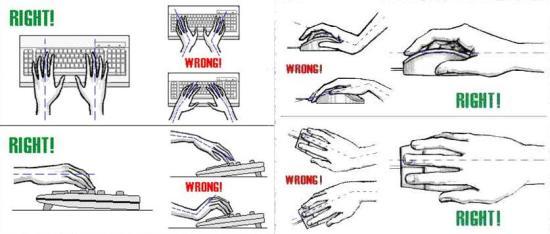While most people consider pain as a negative symptom, it is in fact the body’s method to let you know that something is wrong. Back pain has become the most common problem of present generation due to sedentary lifestyle, long working hours, bad posture and lack of fitness. It is no more just a problem of aged population.
Can young people get chronic back pain?
The answer is yes. Working for prolonged hours without breaks or strenuous work can often lead to chronic back pain. Fortunately, there are simple ways to prevent it.
Work ergonomics for desk job
Chair: Use chair with back rest up to your shoulder. Make sure that the back support is at 90 degrees to sitting surface. Always sit all the way back in your chair such that your hip is in contact with your back rest. Use chairs with arm rest so that your forearm can be supported.
Feet: Preferably your feet should be touching the floor, not dangling in the air. Adjust the chair height accordingly or use a footrest.
Knee:Your knees should at 90 degrees angle.
Desk: Your desk should be at around your elbow level, so that you do not need to keep your shoulders elevated or lean forwards towards the table to work.
Computer: When using computer, place the screen at eye level. While typing or using the mouse, keep your wrist in neutral position.
Check your back posture every hour and correct it.
Take shorts breaks after every 2-3 hours. Use this break to change your position or walk around for few minutes. Simple spine exercises like Mckenzie’s (in sitting or standing position) can help to relax the spine muscles and alleviate the strain.
Additional work ergonomics
Avoid frequent bending and twisting. Do a pivot turn instead of twisting from spine. Those having sitting job may use swivel chair.
When carrying heavy bags, hold it close to your body. Preferably use backpacks instead of side bags.
When lifting heavy objects from the ground, try squatting instead of bending forwards.
How to know whether your posture is right?
Correct posture is one of the foremost essentials to prevent back pain. There are simple steps to know whether you are maintaining proper back posture. A physiotherapist can guide you about how to check and correct it.
Those having spondylosis or any other spine conditions, should seek additional medical advice for taking care of their spine.
How to maintain right posture for long duration?
Our posture is maintained by co-ordinated activation of postural muscles. It is necessary to have adequate strength in these muscles to keep up a proper posture.
Even young people may develop postural muscle weakness due to strenuous work, habitual bad posture, sedentary lifestyle or lack of exercise. As age progresses, spondylosis can further aggravate this muscle weakness.
Simple exercises targeting these muscles can help to build up their strength. You may consult a physiotherapist to assess your muscle strength and get a customized exercise protocol planned.


